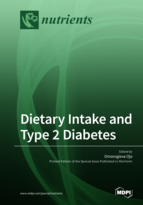Dietary Patterns Related to Triglyceride and High-Density Lipoprotein Cholesterol and the Incidence of Type 2 Diabetes in Korean Men and Women
Round 1
Reviewer 1 Report
The paper has examined whether dietary patterns which can explain the variation in TG/HDL ratio are associated with the incidence of T2DM in adults. Please find attached, the PDF including my comments.
Line22-23: “Our study presents evidence that dietary patterns associated with the TG/HDL-C ratio may predict the risk of type 2 diabetes among Korean adults”.—what is the implication of this finding?
Line28: “2014”. — More recent statistics are available, based on the International diabetes federation. This needs to be updated.
Line29: “majority”.—How much?
Line110: “at least once after baseline”. —What does this mean?
Line124-129: Which questionnaire is this based on? Please provide info about its validity within T2DM population.
Line130: “blood pleasure”. —How was the BP measured?
Line148: “than”. —What does this mean?
Line190: “higher dietary pattern scores”. —In which dietary pattern?
Line301: a table providing frequency of consumption of foods would be useful.
Line301: conclusions—what is the implication of these findings? How these findings can help the field to move forward? What are your recommendations? Please elaborate.
Comments for author File: ![]() Comments.pdf
Comments.pdf
Author Response
This is our reply to reviewer 1 comments.
We attached here the file.
Thank you.
Author Response File: ![]() Author Response.docx
Author Response.docx
Reviewer 2 Report
In this manuscript, dietary patterns related to triglyceride and high-density lipoprotein cholesterol and the incidence of type 2 diabetes in Korean men and women were investigated. The experimental design and results are good, which can support the conclusion. I have no further comments, just a minor question, please give the latest data of diabetes in line 27.
Author Response
This is our reply to reviewer 2 comments.
We attached here the file.
Thank you.
Author Response File: ![]() Author Response.docx
Author Response.docx
Reviewer 3 Report
In this manuscript Song and Lee reported an interesting finding that higher dietary pattern scores are associated with higher risk of developing type 2 diabetes in Korean adults, which is related to higher ratio of TG to HDL-C, and importantly that is sex-specific.
Comments
1. It might be better to draw a diagram or cluster that illustrates the screening and follow-up of the participants, so the readers can easily access it.
2. I don’t quiet understand the “organ and other meats”, please explain.
3. Change meters2 to m2 in line 132.
Author Response
This is our reply to reviewer 3 comments.
We attached here the file.
Thank you.
Author Response File: ![]() Author Response.docx
Author Response.docx




